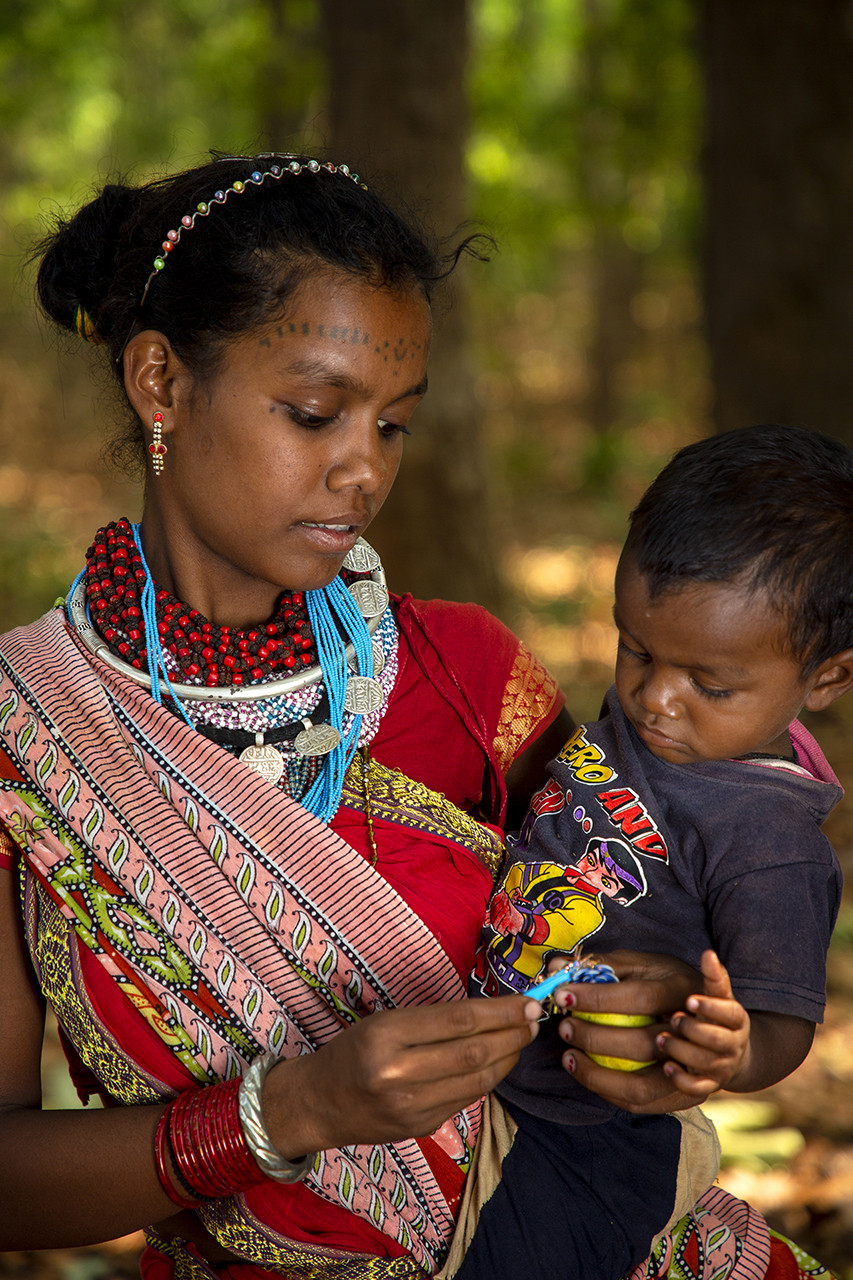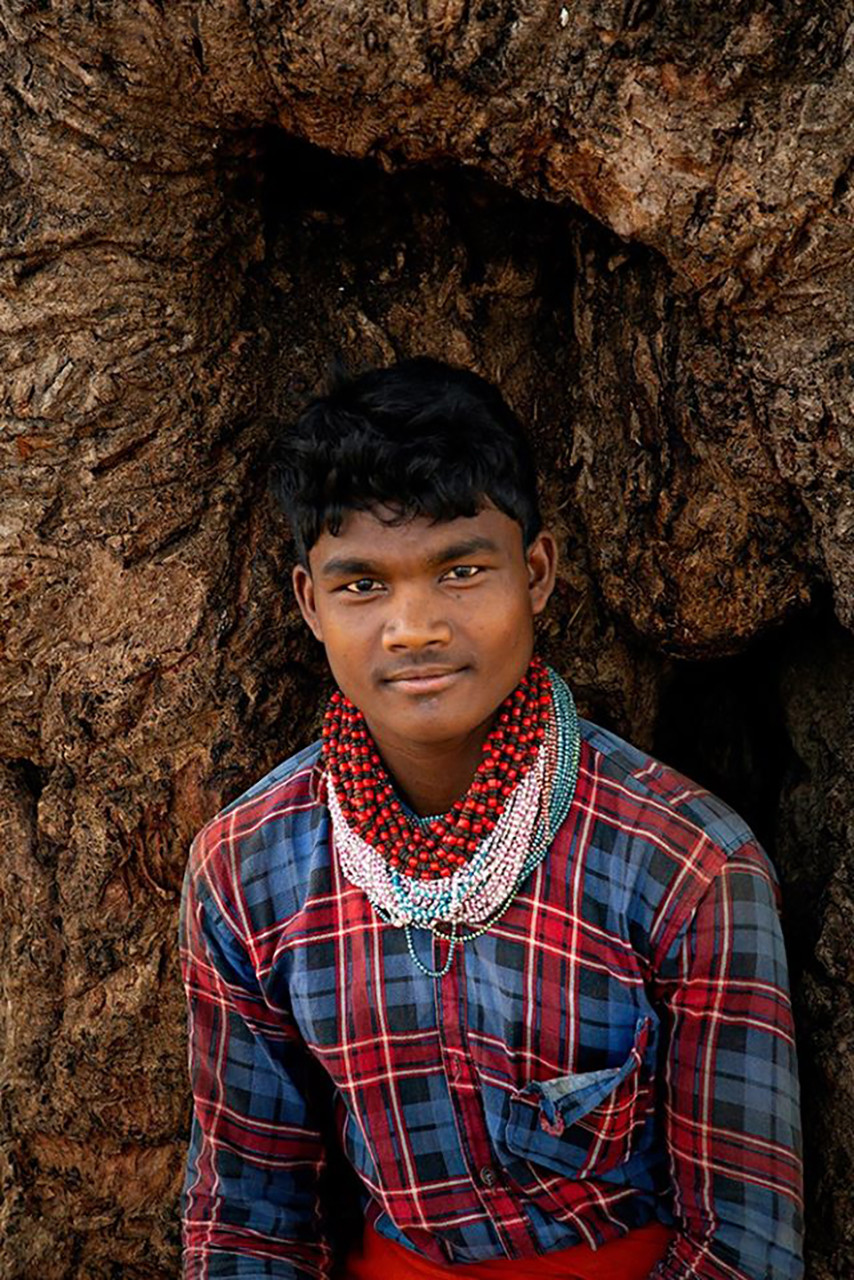Freshly bathed, slates in hand, hair sparkling with oil, their slipper-less feet thudding against the soft village mud as they ran, the children quickly disappeared into the classroom of their small school, beckoned by the metallic clanging of the school bell.
Women walked with baskets on their head towards the fields, and men, with fishing nets in one hand and a beedi in another, walked purposefully towards the village pond. Soon, recitals of "A, B, C, D" rang through the air. As the winter mist lifted, leaving behind diamond-like drops of dew on the grass, the weak sun took its place in the sky. The sleepy hamlet of Bandha Tola was ready for business.
Bandha Tola, a village in the buffer zone of Kanha Tiger Reserve, is inhabited by the Baiga community. Baigas are a forest-dwelling indigenous tribal community in central India. Recognised as one of the Particularly Vulnerable Tribal Groups (PVTG), they are known for their simple yet content way of life. The community enjoys an intriguing intimacy with nature, wherein they believe that the tiger is like a family member and are extremely knowledgeable about the medicinal and healing properties of the various species of flora and fauna found in the forests here.
The community members living around Kanha use this knowledge as a means of livelihood, by collecting Mahul (Bauhinia vahlii) leaves, which are then made into bowls and plates and sold at the market. Collecting leaves from the forest, however, is detrimental to the lives of the Baigas and the wild denizens of Kanha. With the community members having to spend a good part of the day in the forest to collect these leaves, there is a higher chance of human-wildlife conflict. The need to reduce such conflict led to the management of Kanha Tiger Reserve initiating a dialogue with the Last Wilderness Foundation on the urgency of creating alternate sources of livelihood for the Baiga community.
When we first visited Bandha Tola, all we did was drink chai and talk to the women. We wanted to include them in the conversation, and it helped us understand the culture and traditions of the tribe. One day, as I was walking around the village, I spotted a mataram (an elderly lady) from the community wearing a silver-coin necklace known as athani strung together on a black thread. As I settled down next to her, practically drooling at the necklace, I asked her “Kisne banaya hai yeh, mataram? (Who made this necklace, mataram?)” To which she exclaimed, “Hum hi banate hain, aur kaun banayega? (I made it myself, who else would make it for me?)” When I asked whether she could make one for me, she chuckled loudly and exclaimed in disbelief, “Tum pehnoge athani? (You would wear an athani?)” I told her that it would be an absolute honour to wear something made by the Baiga community, but was met with more incredulity and another chuckle before she walked away mumbling to herself, followed loyally by her geese.
Almost seven months into the visits and interactions, we chanced upon the hero of our Baiga livelihood initiative, Sunita Marawi. Petite with coal-black hair and twinkling brown eyes, Sunita was a teacher at the primary school in the village. As we sat talking to her, the students (free from the confines of the classroom) swung defiantly from the tree behind her. Over a glass of hot lemongrass tea, she narrated how difficult it had been growing up. With little money in the family, her books, stationery and even her uniform were provided to her by her school. She completed her initial schooling at Bandha Tola and then moved to Birsa, finally completing her higher secondary education in Mandai. She decided to come back to Bandha Tola to teach at the primary school where she had studied, to try and provide other children in the community with an opportunity at a good education.
“I didn’t want other children in the community to struggle as I did; I wanted to provide them with a platform where they could learn, explore and know more about life outside of the village.” Realising that this was the changemaker we were looking for, we put forth the idea of channelising Baiga jewellery as a means of livelihood for the community. “Main koshish karungi baaki sab ko samjhane ke liye, par promise nahi kar sakti (I can try and make them understand, but I can’t make any promises).”
Excited after our chat, we waited patiently but didn’t hear from Sunita for another two months. One morning as we were set to leave from Kanha, we got a call from her. With a shaky network (or was it me shaking with excitement), all I could gather was, “Kya aap gaon aa sakte hain? (Could you please come to the village?)” It took us less than ten minutes to gather our belongings and trundle off on the kucchca road towards the village.
Upon reaching there, we saw three women sitting with something spread out on the ground in front of them. “Yeh dekhiye (Look at this)," said Sunita, pointing towards the first batch of jewellery. It was stunning, as expected, but what was even more delightful was the involvement of two more community members. Chandravati and Indravati, siblings with a shock of black hair and beautiful almond-shaped eyes, were masters of the art and were ready to play an active part in the project. Through them, a lot more women volunteered to join the initiative. “Mere pass naukri hai, par main chahti hoon ki gaon mein baki auratein bhi aatma nirbhar bane (I have a job now, but I want the rest of the women in the village also to be self-dependent),” explained Sunita, as a curious crowd gathered around us. Soon, whenever we visited the village, we would see artists waiting for us eagerly with their finished products and new ideas on what else they could make. Men, who were earlier sceptical of the initiative, started gathering to watch from a safe distance.
One day, as we went to collect the finished products and to pay the artists, I heard a clear song ringing through the otherwise quiet village. “Yeh jashn hai – Mahua ke phoolon ka girne ka, aur khushi ka (This is a celebration – of the falling of Mahua flowers and of our happiness),” said Pisiya Bai while stringing together a necklace. “Par khushi kyun? (But why also happiness?)” I asked. “Kyunki is kaam se, auraton ko apne upar bharosa hota ja raha hai, aur woh yeh kaam aaram se ghar par baith ke kar sakti hain (Because of this job, the women here have started building faith in themselves, and it is so convenient, it can be easily done from the comfort of our homes).”
Through word of mouth, and with the support of the forest department, soon, other villages inhabited by the community started to get involved in the making of the jewellery that was now being sold in souvenir shops at the reserve.
Women apart, the turning point was when while visiting one of the villages, the men ran up to us with some products. They had started helping their wives, mothers, and sisters in completing the orders if the said artist was unwell or unable to make the products on time. Sunita’s own husband helped her complete pending orders while she was pregnant with her baby, Hrithik. “Is mein sharmana kya hai, yeh toh samaj ke liye achha hai aur jungle ke liye bhi (What is there to be ashamed about, this is good for our community and the jungle),” he said with a shy smile, while handling an athani necklace to me.
As I left the village, I couldn't help but marvel at how an old tradition had changed the future for the better, for its people and their forest.
Last Wilderness Foundation, in association with the Kanha Forest Department, works with close to 40 women across three villages for the Baiga livelihood project. You can see the products on Nature Works – the online partner for the initiative.






